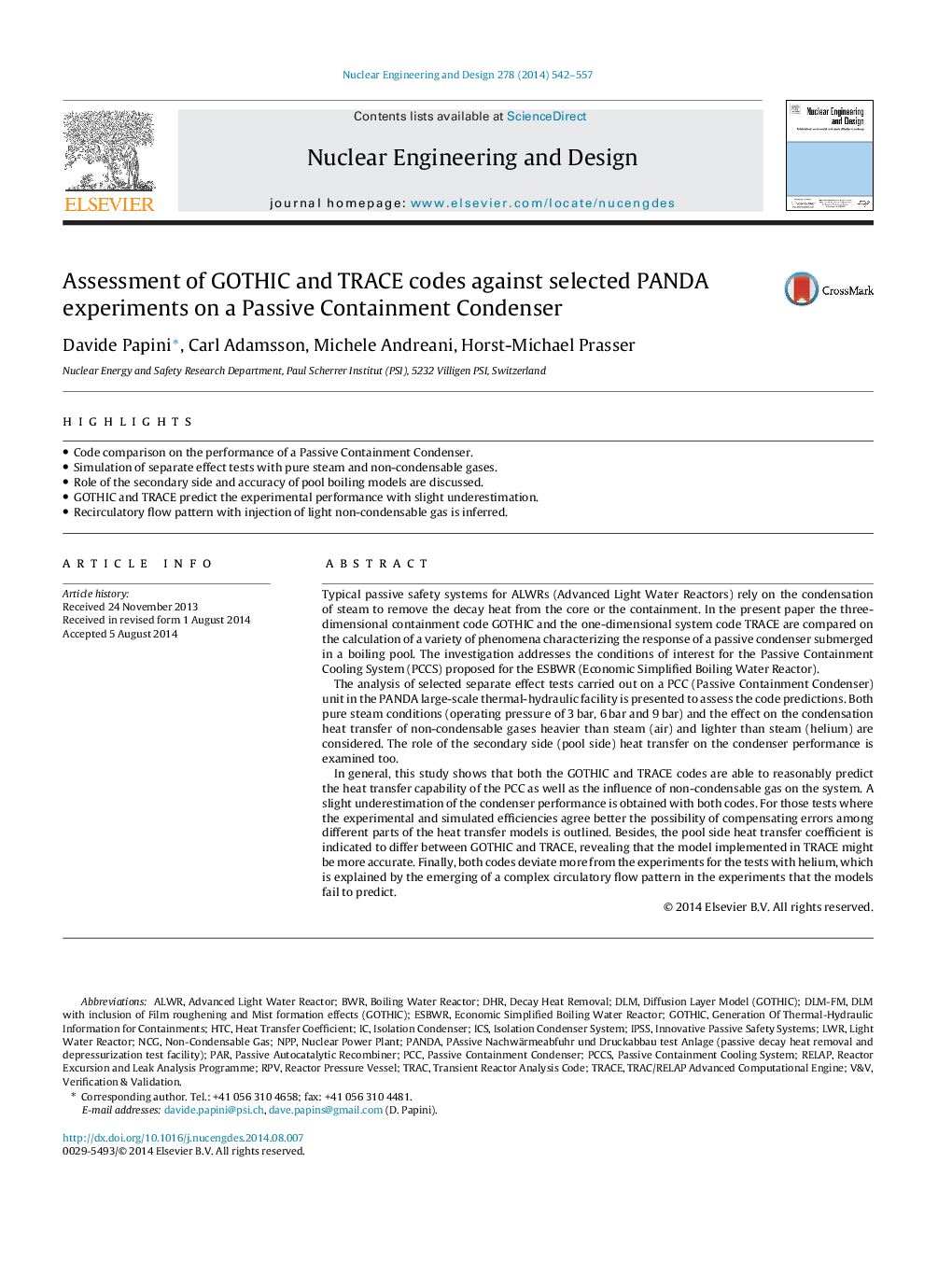| Article ID | Journal | Published Year | Pages | File Type |
|---|---|---|---|---|
| 6762072 | Nuclear Engineering and Design | 2014 | 16 Pages |
Abstract
In general, this study shows that both the GOTHIC and TRACE codes are able to reasonably predict the heat transfer capability of the PCC as well as the influence of non-condensable gas on the system. A slight underestimation of the condenser performance is obtained with both codes. For those tests where the experimental and simulated efficiencies agree better the possibility of compensating errors among different parts of the heat transfer models is outlined. Besides, the pool side heat transfer coefficient is indicated to differ between GOTHIC and TRACE, revealing that the model implemented in TRACE might be more accurate. Finally, both codes deviate more from the experiments for the tests with helium, which is explained by the emerging of a complex circulatory flow pattern in the experiments that the models fail to predict.
Keywords
PCCHTCTRACNCGPassive autocatalytic recombinerLWRPCCsNPPDLMICSDHRRPVIPSSBWRV&Vverification & validationParBoiling water reactorLight water reactorPassive containment cooling systemHeat transfer coefficientReactor pressure vesselnuclear power plantPANDAtraceDecay heat removalisolation condenserNon-condensable gasRELAPGothic
Related Topics
Physical Sciences and Engineering
Energy
Energy Engineering and Power Technology
Authors
Davide Papini, Carl Adamsson, Michele Andreani, Horst-Michael Prasser,
